Recombinant Human BSG protein(Met1-His205)
| Cat.No. : | BSG-618H |
| Product Overview : | Recombinant Human CD147 (NP_940991.1) (Met 1-His 205) with quinary-aa peptide (DDDDK) at the C-terminus was expressed and purified in HEK293. |
| Availability | April 21, 2025 |
| Unit | |
| Price | |
| Qty |
- Specification
- Gene Information
- Related Products
- Case Study
- Application
- Download
| Species : | Human |
| Source : | HEK293 |
| Tag : | Non |
| Protein Length : | 1-205 a.a. |
| Form : | Lyophilized from sterile 50mM Tris, 100mM NaCl, pH 8.0. Normally 5 % - 8 % trehalose, mannitol and 0.01% Tween80 are added as protectants before lyophilization. |
| Molecular Mass : | The recombinant mature human CD147 cytokine comprises 190 amino acids and has a predicted molecular mass of 20.7 kDa. As a result of glycosylation, the rhCD147 migrates as an approximately 35-38 kDa band in SDS-PAGE under reducing conditions. |
| Endotoxin : | < 1.0 EU per μg of the protein as determined by the LAL method |
| Purity : | > 95 % as determined by SDS-PAGE. |
| Storage : | Samples are stable for up to twelve months from date of receipt at -20°C to -80°C. Store it under sterile conditions at -20°C to -80°C. It is recommended that the protein be aliquoted for optimal storage. Avoid repeated freeze-thaw cycles. |
| Reconstitution : | It is recommended that sterile water be added to the vial to prepare a stock solution of 0.2 ug/ul. Centrifuge the vial at 4°C before opening to recover the entire contents. |
| Gene Name | BSG basigin (Ok blood group) [ Homo sapiens ] |
| Official Symbol | BSG |
| Synonyms | BSG; basigin (Ok blood group); basigin (OK blood group) , OK; basigin; CD147; EMMPRIN; CD147 antigen; OK blood group antigen; collagenase stimulatory factor; leukocyte activation antigen M6; extracellular matrix metalloproteinase inducer; tumor cell-derived collagenase stimulatory factor; M6; OK; 5F7; TCSF; |
| Gene ID | 682 |
| mRNA Refseq | NM_001728 |
| Protein Refseq | NP_001719 |
| MIM | 109480 |
| UniProt ID | P35613 |
| ◆ Recombinant Proteins | ||
| BSG-012H | Active Recombinant Human BSG protein, His-tagged | +Inquiry |
| RFL1770HF | Recombinant Full Length Human Basigin(Bsg) Protein, His-Tagged | +Inquiry |
| BSG-05H | Recombinant Human BSG Protein, Fc-tagged | +Inquiry |
| BSG-013H | Recombinant Human BSG Protein, His-Tagged | +Inquiry |
| BSG-271H | Recombinant Human BSG Protein, DYKDDDDK-tagged | +Inquiry |
| ◆ Cell & Tissue Lysates | ||
| BSG-2726HCL | Recombinant Human BSG cell lysate | +Inquiry |
| BSG-2512MCL | Recombinant Mouse BSG cell lysate | +Inquiry |
Case 1: Vanarsdall AL, et al. mBio. 2018
Human cytomegalovirus (HCMV) gets into different cells by using unique methods that involve various envelope proteins. Glycoprotein gB is thought to help the virus fuse with the cell once triggered by gH/gL proteins connecting with certain receptors. A gH/gL/gO trimer is essential for entry into all cells, while entry into fibroblasts requires binding to PDGFRα. For entry into epithelial and endothelial cells, as well as monocyte-macrophages, a pentamer complex (gH/gL with UL128, UL130, UL131) is necessary, though it binds unknown receptors. Screening an epithelial cell cDNA library identified CD147, a surface protein enhancing entry of pentamer-expressing HCMV into HeLa cells but not into fibroblasts. Antibodies against CD147 inhibited HCMV entry in epithelial and endothelial cells but had no effect on fibroblasts. CD147's role seems indirect, aiding cell-cell fusion without directly binding the virus. As such, CD147 is a specific entry mediator for pentamer-bearing HCMV, aiding its penetration into epithelial and endothelial cells.
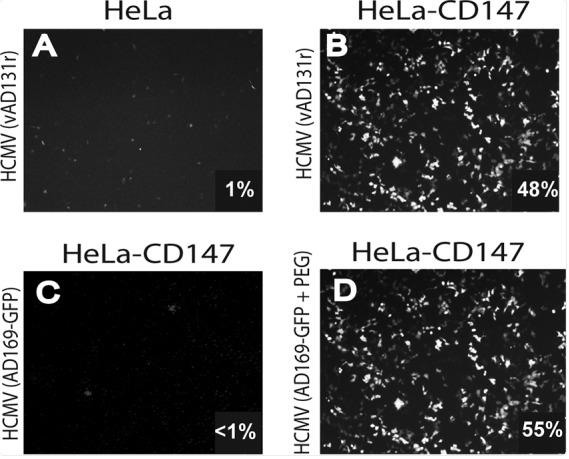
Fig1. Transduction of HeLa cells with CD147 enhances HCMV entry.
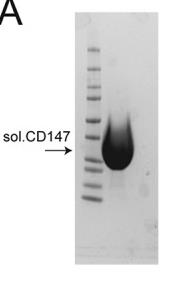
Fig2. A soluble form of CD147 was analyzed by electrophoresis, polyacrylamide gel staining, and Coomassie brilliant blue stain.
Case 2: Zenonos ZA, et al. J Exp Med. 2015
Plasmodium falciparum is the nasty parasite behind the deadliest type of malaria, causing many childhood deaths and holding back socioeconomic progress in numerous countries. While there are drugs to fight malaria, drug-resistant strains keep popping up, shortening their effectiveness. So, here's a different approach: target host factors crucial for the parasite's growth. This strategy has worked for other diseases, but no one's tried it for malaria yet. We've developed a chimeric antibody, called Ab-1, aimed at basigin (an essential receptor for the parasite's entrance into red blood cells) as a potential malaria treatment. Ab-1 blocked all tested parasite strains from invading the cells and quickly cleared blood-stage infection in a model without obvious side effects. This suggests that targeting host basigin with antibodies like Ab-1 might be a solid treatment for battling drug-resistant P. falciparum.
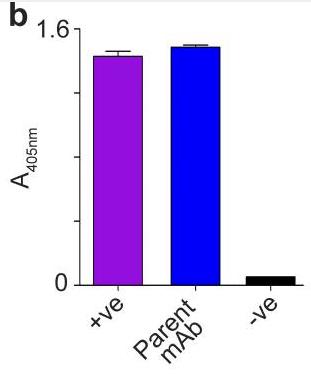
Fig1. Analysis of the parent anti-basigin mAb binding to recombinant basigin by ELISA.
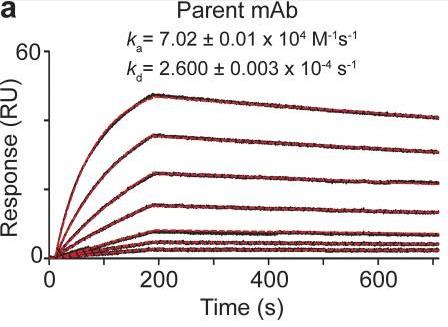
Fig2. The basigin-binding affinity of the parent mAb and Ab-1 were compared by using surface plasmon resonance.
Human Basigin (BSG), also known as CD147, is a versatile transmembrane glycoprotein that's wrapped up in several key biological functions, like cell adhesion, immune responses, and the advance of tumors. Thanks to these multiple roles, recombinant Human BSG (rhBSG) has carved out a niche in both research and industrial production.
In the lab, rhBSG is mainly used to dig into its role in cell signaling and sticking together, especially since it's a part of the immunoglobulin superfamily (IgSF) and is linked to managing matrix metalloproteinases (MMPs). Researchers are also eyeing it as a potential cancer treatment target, because it tends to be overexpressed in a bunch of solid tumors, including those in the lungs, liver, and breast, to name a few. Plus, rhBSG comes in handy in functional tests like ELISA, providing a glimpse into its binding skills and interactions with other proteins, which is key for understanding its part in both healthy and diseased conditions.
On the industrial side, rhBSG is mainly churned out for drug discovery and development, zeroing in on its promise as a target for cancer drugs. By producing it in different systems, like HEK293 cells, factories can whip up recombinant protein that's useful for crafting antibodies and other diagnostic tools. This kind of large-scale production also means there are consistent reagents available for research, which is super important for reliable and repeatable experiments. Moreover, rhBSG is part of creating biomaterials used in tissue engineering and regenerative medicine because of its role in making cells stick and move around.
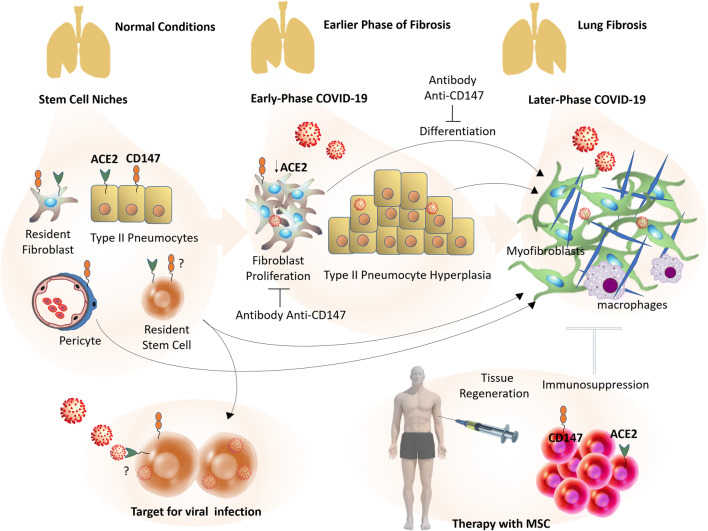
Fig1. Stem cells in COVID-19: from a target for viral infection to therapy with mesenchymal stem cells (MSC). (Henning Ulrich, 2020)
Not For Human Consumption!
Inquiry
- Reviews
- Q&As
Ask a Question for All BSG Products
Required fields are marked with *
My Review for All BSG Products
Required fields are marked with *
Inquiry Basket


